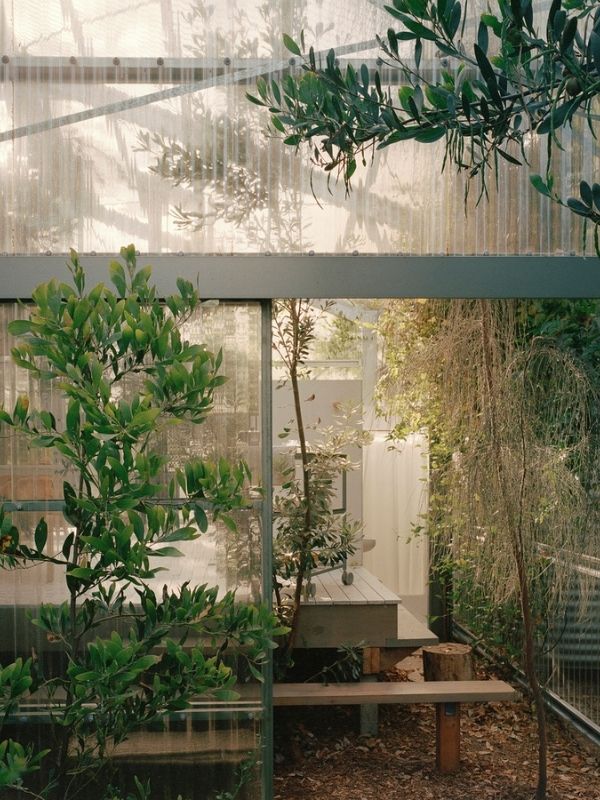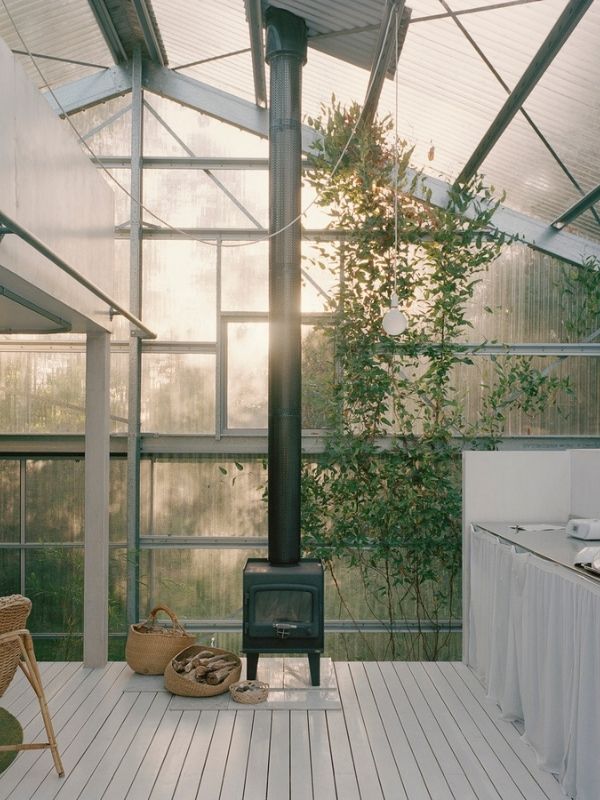Garden House, located on Victoria’s south coast, is an experimental ‘sometimes’ home that was created by Baracco+Wright Architects in the midst of repairing the site’s ecosystem. The design of the home looks to explore the theory of space, with a number of plantations implemented as spatial boundaries.

The home is made with a mix of industrialised and handmade elements, including both a steel and timber frame. A polycarbonate sheet is utilised as a thin physical boundary, in order to maintain transparency and connection with the vegetation implemented by the practice.
The polycarbonate layer and the vegetation form a quasi-wall that starts on the inside, with the moat-like horizontal boundary of the home achieved through how the raised floor does not run all the way across the polycarbonate layer.
The raised deck allows the unsealed ground and its floodwaters to flow directly and naturally underneath the dwelling. The ontology of the dwelling is nearly flat, with nature not simply confined to containers or brought inside. It is able to grow as nature intended, without restriction.

The humble tent has often been an inspiration to Baracco+Wright, and it is rather clear to see the inspiration within Garden House. The home is simply a deck and raised platform, covered by a transparent layer. The interior perimeter, likened to a verandah, is a garden, with living areas being spatially defined in a subtle manner, similar to that of a larger tent.
Given the climate of south-east Australia, the home becomes cold or hot depending on the time of the year, but for the most part, it remains at a comfortable and suitable temperature. The connection with nature is entirely out-of-body, with its occupants asked to allow themselves to move into a space outside their physical being to experience the site’s offerings.

The site’s unique natural history influenced many decisions within the design process. A leftover heavily vegetated corridor between two cleared plots where wildlife grazes, the site acts as a time capsule, despite clear human intervention. Small patches of the natural plantations remain untouched in order for the site to resemble its previous intent. The site connects openly to the neighbouring plots and Westernport, a large bay located nearby.
Garden House derives its name from its site and the plantations utilised as spatial boundaries. Baracco+Wright Architects have aimed to buck architectural and stylistic conventions, in favour of ensuring the home plays second fiddle to its surrounding vegetation. The home itself, while minimalist in quality, is rich in experience, allowing those who reside within the home to take in their surroundings without interruptions from walls and structures.

